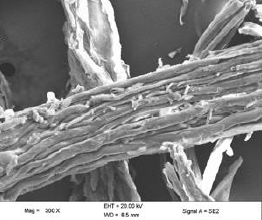Potential of Anacardic Acid for Nanosized Cellulose Preparation Under Different Treatment Conditions
Keywords:
Anacardic acid, Cellulose, Nanosized cellulose, Ultrasonication, Reflux, Microwave irradiationAbstract
Herein, anacardic acid was applied for the preparation of nanosized cellulose using three different 11 treatment conditions including ultrasonication, microwave irradiation, and reflux. Physico-chemical 12 characterization was undertaken using FTIR, TEM, SEM, and XRD. FTIR, TEM, and SEM analyses 13 confirm the preparation of nanosized cellulose with similar chemical but different physical properties as 14 the cellulose starting material. In addition, calculated degrees of crystallinities from XRD data revealed 15 crystallinities of 53.9, 54.4, and 54.7 % for the nanosized cellulose prepared by ultrasonication (UNC), 16 microwave irradiation (MNC), and reflux (RNC) respectively, which all are higher than the 53.3 % of the 17 precursor cellulose. Overall, the study shows that anacardic acid holds potential for the preparation of 18 nanosized cellulose.

Published
How to Cite
Issue
Section
Copyright (c) 2022 Olugbenga O. Oluwasina, Abiodun D. Aderibigbe, Damilola C. Petinrin, Adeyemi S. Adebisi, Olayinka O. Oluwasina, Oluwasegun J. Wahab

This work is licensed under a Creative Commons Attribution 4.0 International License.







